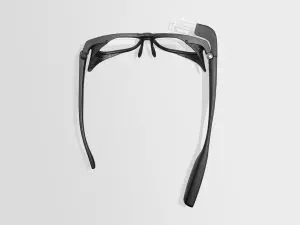In the workplace, nobody calls them Glassholes. Employees at hundreds of companies are wearing Google Glass, the heads-up display glasses that have found a new home in factories and healthcare facilities after getting off to a rough start in the consumer space.
Now Google has a new version of the device–Glass Enterprise Edition 2–with a new look, a faster processor, and a brighter display. The glasses actually come in two parts: Google makes the right side of the glasses–the side that holds all the technology–and Smith Optics makes the safety glasses that the Glass attaches to. This makes it possible for multiple employees to own their own pair of safety glasses and share one Glass.

The display in the new Glass is the same size as the first Glass Enterprise Edition, at 640 X 480 pixels. To the worker, Google says, it looks like a 30-inch display 6 feet away. Also, the new Glass runs pure Android, no longer an Android/Glass hybrid OS. Because of this, Kothari says, any developer who makes apps for Android phones can quickly learn to develop apps for Glass. Glass now runs on an XR1 system-on-a-chip from Qualcomm, which Kothari told me is capable of running a neural network to power computer vision applications, among other things. Glass’s camera gets an upgrade from 5 megapixels to 8 megapixels.
The battery, which resides at the back end of the device (positioning it behind the wearer’s ear), is now more efficient and can support two solid hours of video streaming before needing a recharge. The new Glass gets a USB port for charging. The device can be charged to 50% in 15 minutes.
Glass in the enterprise
Google has identified three main applications for Glass in the enterprise, which Kothari calls “superpowers.” The first is as an aid to remind employees of standard operating procedures, meaning the proper way to assemble a product or package it up for shipment. The second is an I-see-what-you-see scenario where a supervisor or an expert can look in on a person’s work and give direction or advice. (It was this Glass superpower that allowed me to direct Mr. Kothari when he kindly went out to the coffee station to get me a snack.) The third is an inspection use case where Glass shoots video and records audio notes during the wearer’s inspection of a machine or property.
These general use cases are seen in a number of industries. Right now Google is focusing on the manufacturing, healthcare, logistics, food service, and field service industries. Google supplies Glass to enterprises in these industries through its partners, which develop the custom Glass apps that support the specialized workflows used in the client’s business. The partner also acts as the integrator in these installations–managing the network connectivity, mobile device management, and back-end systems integration, as well as providing support and training. The enterprise buys the Glasses, app development, and services from the partner as a package deal.
Glass Enterprise Edition 2 is priced at $999 per device, Kothari told me, with the Smith Optics glasses an additional $250 (plus any extra cost for prescription lenses).
Many companies developing augmented or mixed reality headsets are trying to sustain themselves by selling their wares into the enterprise as the consumer market for the devices remains far off. But unlike mixed reality headsets like Microsoft’s HoloLens, Glass does not place 3D imagery into the user’s visual space, but rather provides relevant information in a small display just above the user’s eye. Other parts of Google are working with augmented reality. The Maps group, for instance, is testing phone-based AR that superimposes place names and directions over the user’s view of the world.
Google began pivoting Glass from a consumer market to the enterprise in 2015, then announced the pivot in 2017. The Glass group was originally part of Google X–Google’s moonshot incubator–but recently “graduated” to become a self-contained business group.
Recognize your brand’s excellence by applying to this year’s Brands That Matter Awards before the early-rate deadline, May 3.
